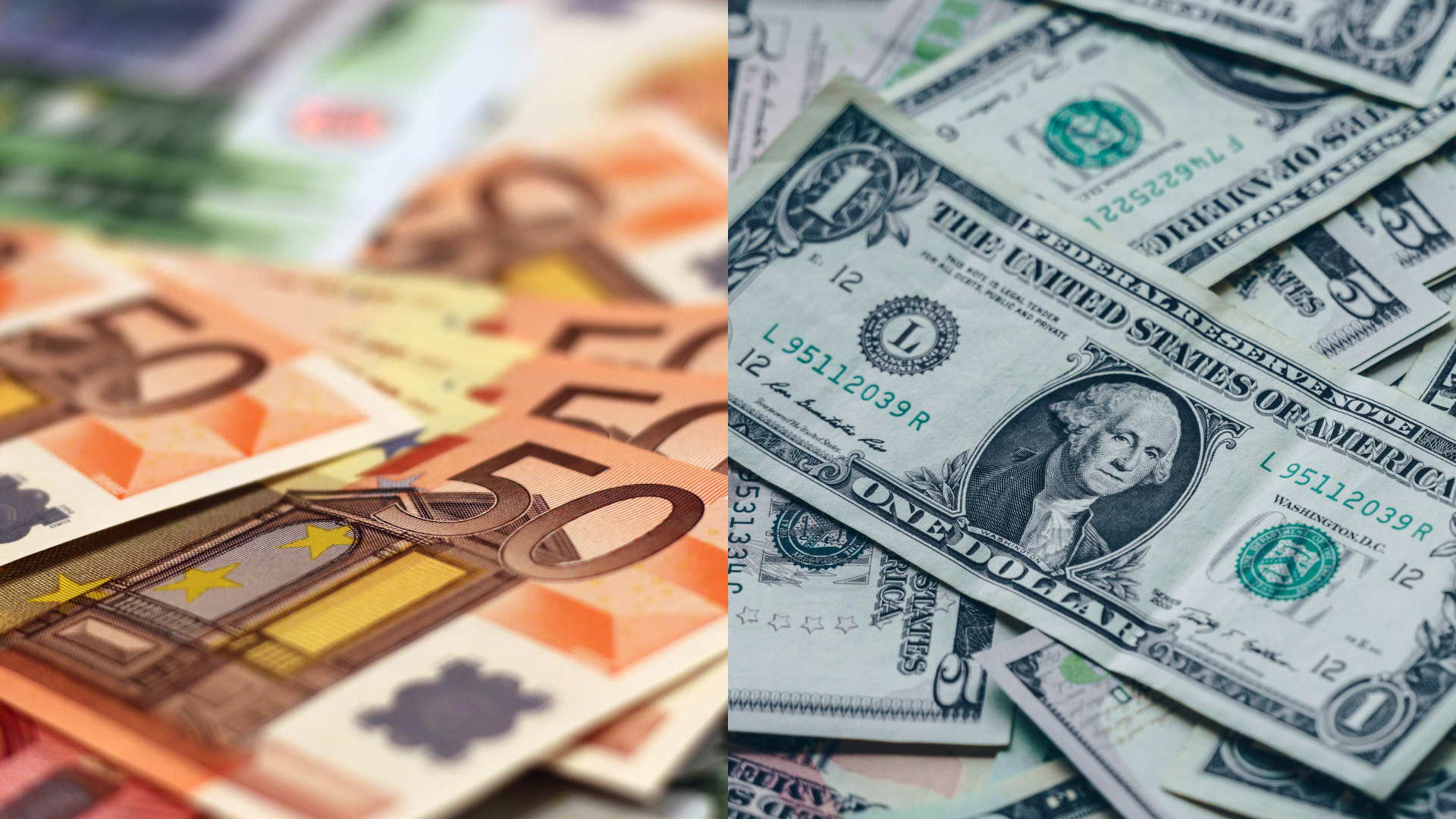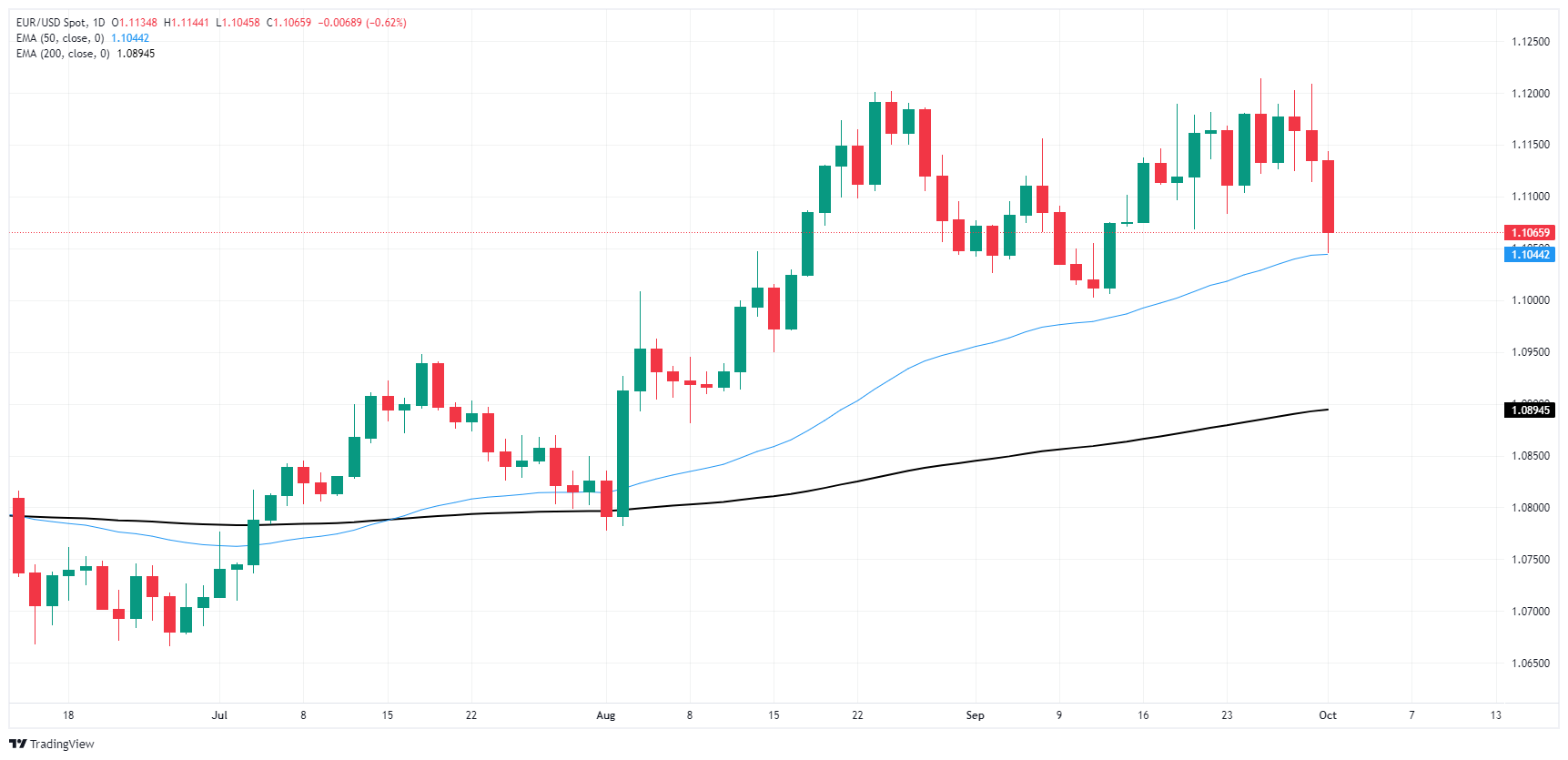
The EUR/USD pair slid 0.6% on Tuesday, hitting its lowest point in nearly a month as investors flocked to the U.S. Dollar for safety amid mounting geopolitical tensions and disappointing economic indicators. After touching 1.1050, the Euro found minor support but remains under pressure, reflecting a broader loss of momentum.
The sell-off comes as geopolitical tensions in the Middle East intensified, with Iran reportedly launching a missile attack on Israel, which was responding to recent activities in Lebanon. The U.S. has pledged to back Israel, raising fears of a broader regional conflict. The heightened risk has prompted investors to retreat from riskier assets, benefiting the U.S. Dollar and weighing on the Euro.
Adding to the negative sentiment, the European Harmonized Index of Consumer Price (HICP) inflation data came in weaker than anticipated. September’s year-over-year core HICP dropped to 2.7%, and month-over-month headline inflation dipped to 1.8%, below forecasts. The rapid cooling of inflation adds to worries about Europe’s slowing economy, further reducing the Euro’s appeal as the European Central Bank faces challenges in keeping its tightening stance intact.
Meanwhile, in the U.S., economic releases also painted a mixed picture. ISM Manufacturing PMI remained flat at 47.2 in September, signaling persistent contraction and falling short of forecasts. Prices paid by manufacturers fell to 48.3, further suggesting weakening demand. However, JOLTS Job Openings surged to 8.04 million in August, exceeding expectations and providing a temporary lift to optimism in the U.S. labor market. Still, the ISM Manufacturing Employment Index slipped to 43.9, highlighting challenges in translating job openings into actual hiring.

The recent price action saw EUR/USD come close to the 50-day Exponential Moving Average (EMA) at 1.1045, a level critical for near-term support. While the pair managed a small bounce late in the session, it has erased much of the gains from its recent run above 1.1200, suggesting that bullish momentum is weakening. Buyers now face an uphill battle to push the pair back above the 1.1100 handle, with sentiment growing more cautious.
Investors are now setting their sights on Friday’s U.S. Nonfarm Payrolls (NFP) report, which is expected to offer clearer direction. Given the current backdrop, a robust NFP report could strengthen the U.S. Dollar further, keeping the pressure on the Euro, while a weaker reading might provide temporary respite. For now, the Euro remains on the defensive, with market participants wary of further geopolitical escalations and a murky economic outlook on both sides of the Atlantic.
The combination of geopolitical risk, underwhelming economic data, and heightened uncertainty has kept buyers at bay, and the coming days could see further downside unless sentiment shifts substantially.



